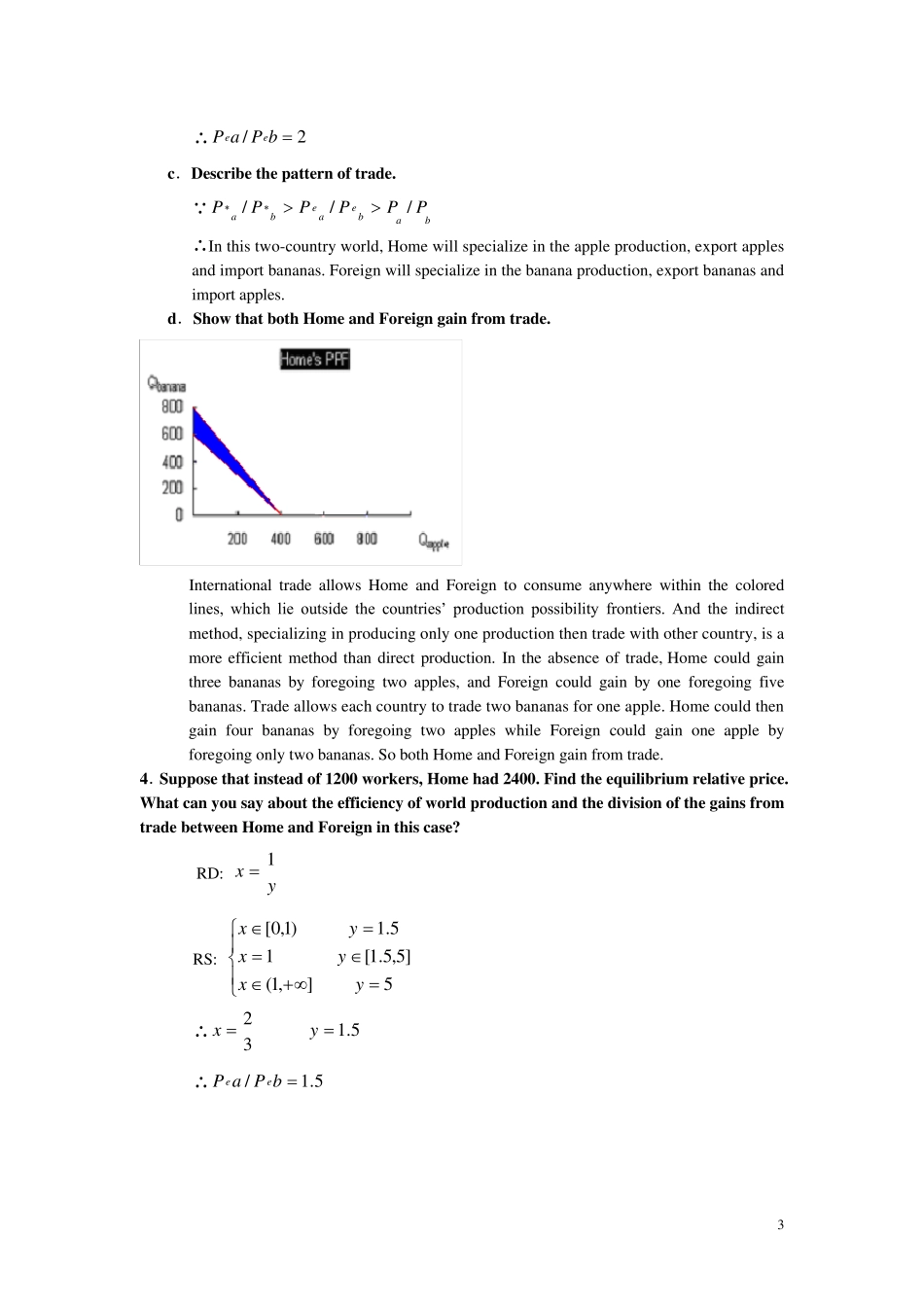1 Chapter 2 1.Home has 1200 units of labor available. It can produce two goods, apples and bananas. The unit labor requirement in apple production is 3, while in banana production it is 2. a.Graph out the production possibilities frontier: b.What is the opportunity cost of apples in terms of bananas? 5.1LbLaaa c.In the absence of trade, what would the price of apples in terms of bananas be? In the absence of trade, since labor is the only factor of production and supply decisions are determined by the attempts of individuals to maximize their earnings in a competitive economy, only when LbLaba/aa /PPwill both goods be produced. So 1.5 /PPba 2.Home is as described in problem 1. There is now also another country, Foreign, with a labor force of 800. Foreign’s unit labor requirement in apple production is 5, while in banana production it is 1. a.Graph Foreign’s production possibilities frontier: b.Construct the world relative supply curve. Home's PPF0200400600800200400600800QappleQbananaForeign's PPF0200400600800100080160 240 320 400Q*appleQ*banana 2 3.Now suppose world relative demand takes the following form: Demand for apples/demand for bananas = price of bananas/price of apples. a.Graph the relative demand curve along with the relative supply curve: abba/PP/DD When the market achieves its equilibrium, we have 1ba)(DDbabbaaPPQQQQ ∴RD is a hyperbola xy1 b.What is the equilibrium relative price of apples? The equilibrium relative price of apples is determined by the intersection of the RD and RS curves. RD: yx1 RS: 5]5,5.1[5.1],5.0(5.0)5.0,0[yyyxxx ∴25.0yx 3 ∴2/bPaPee c.Describe the pattern of trade. babeaebaPPPPPP/// ∴In this two-coun...


